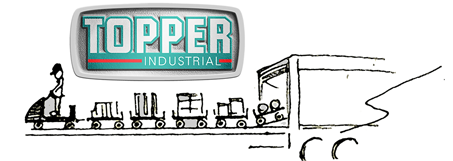As the process of handling involves more steps and becomes increasingly manualized, production costs increases. Storing products instead of receiving and immediately shipping them also, adds cost to the overall process. Customers must determine when lost sales due to inventory are balanced by increased handling and storage costs. Conversely, automating the additional manual steps will reduce the labor and costs associated with these processes.
All distribution centers (DCs) have three main areas: the receiving dock, the storage area, and the shipping dock. In small organizations it is possible for the receiving and shipping functions to occur side-by-side. In large centers, separating these areas simplifies the process. The demand for faster production has been created by the customer expectation. No longer is a consumer willing to order a product on Monday and receive it on Friday. Two-day shipping is now considered “slow” with many Amazon Prime customers insisting that any order in the morning should be at their doorstep by that afternoon.
Geographic distance from DC to the end user’s home must be close. Being of equal importance, the distribution center planning must maximize its efficiency. If the distribution center relies on a conveyor system suspended from the ceiling consideration needs to be given to the weight-bearing capacity of the ceiling joists. If the conveyor system runs along the floor, then consideration needs to be given in the design stage to the placement of columns (particularly as they relate to the floor space between pallet rack frames). Other planning considerations include attention to all areas of distribution such as slotting, product replenishment, storage media, and power requirements.
In the e-commerce distribution center, the reduction of walk-time by a picker is in direct relation to the increasing need for fast production. The 80/20 rule applies. Twenty percent of the SKUs are 80 percent of the products picked, packed, and shipped out the DC.
Topper Industrial works with the demand for faster production of product in and out of the DC. Topper offers cart delivery processes that enable the workers ability to accurately pick product. Instead of fork trucks driving back and forth creating less productive work flow, Topper carts deliver products to the line workers in a train allowing for instantaneous load and unload at specific line positions. Because of this, production rates increase when using a Fork Truck Free distribution center environment.
About Topper Industrial
For more than twenty years, Topper Industrial, (www.topperindustrial.com) based just outside of Milwaukee, WI, has been a leader in the material handling equipment industry. The company’s product roster features industrial carts, conveyors, lifts, lifts & tilts, shipping racks, containers, casters, and cart components. From mother-daughter carts to quad steer carts to tilt carts and rotate carts, Topper’s material handling solutions make delivering material line side more effective through more efficient practices. Topper Industrial has a team of experienced professional experts able to assess and provide the right product for all material handling equipment requirements.
Topper Industrial is a proud member of MHI. Follow on Twitter @TopperInd or on LinkedIn.

